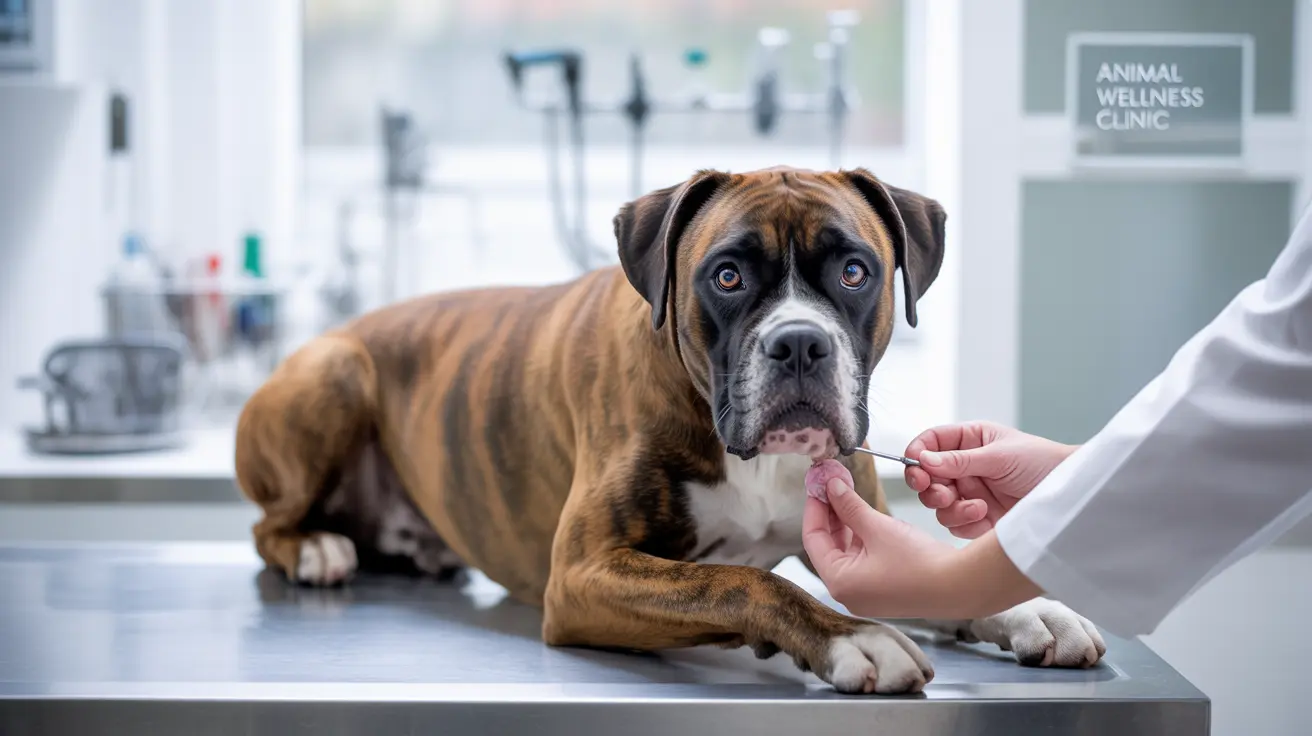When pet owners discover a soft, movable lump under their dog's skin, it can be a cause for concern. Often, these masses turn out to be lipomas - benign fatty tumors that commonly develop in dogs. Understanding what lipomas are, how they're diagnosed, and when they require treatment is crucial for every dog owner.
In this comprehensive guide, we'll explore everything you need to know about lipomas in dogs, from identification to treatment options, helping you make informed decisions about your pet's health.
What Are Canine Lipomas?
Lipomas are soft, fatty tumors that develop beneath a dog's skin. These benign masses consist of mature fat cells and typically appear as round or oval-shaped lumps that move freely when touched. While they can develop anywhere on the body, they're most commonly found on the trunk, chest, and upper legs.
Most lipomas are harmless and grow slowly, though their presence can sometimes cause concern among pet owners. They're more common in middle-aged to older dogs and certain breeds may have a higher predisposition to developing these fatty tumors.
Identifying and Diagnosing Lipomas
Veterinarians use several methods to diagnose lipomas in dogs. The initial examination usually involves palpation - feeling the mass to assess its texture, mobility, and size. Lipomas typically feel soft and movable under the skin, unlike other types of tumors that might feel firm or fixed in place.
To confirm a diagnosis, veterinarians commonly perform a fine-needle aspiration (FNA). This simple procedure involves inserting a small needle into the mass to collect cells for microscopic examination. The presence of fatty tissue cells typically confirms the diagnosis of a lipoma.
When Should Lipomas Be Removed?
Not all lipomas require surgical removal. The decision to remove a lipoma depends on several factors:
- Size and growth rate of the tumor
- Location and whether it interferes with movement
- Whether the mass causes discomfort
- The overall health of the dog
- The presence of multiple lipomas
Surgical removal is typically recommended when lipomas become large enough to impact mobility, cause discomfort, or interfere with normal body functions. Some owners may also opt for removal for cosmetic reasons, though this should be carefully weighed against the risks of surgery.
Post-Surgery Care and Monitoring
If your dog undergoes lipoma removal surgery, proper post-operative care is essential for recovery. This typically includes:
- Keeping the surgical site clean and dry
- Preventing your dog from licking or scratching the incision
- Limiting physical activity during the healing period
- Monitoring for signs of infection or complications
- Following up with your veterinarian as scheduled
Frequently Asked Questions
What are the common locations where lipomas typically form in dogs?
Lipomas most commonly form on a dog's trunk, chest, and upper legs. They can also appear on the abdomen and in other areas, but these locations are most typical. Some dogs may develop multiple lipomas in various locations simultaneously.
How do veterinarians diagnose lipomas in dogs, and what tests are involved?
Veterinarians typically start with a physical examination and then perform a fine-needle aspiration (FNA) to collect cell samples. In some cases, they may recommend additional imaging tests like ultrasound or CT scans, especially for deeper masses or when planning surgical removal.
Are all lipomas in dogs harmless, or when should they be surgically removed?
While most lipomas are harmless, they should be removed if they:
- Interfere with movement
- Cause discomfort
- Grow rapidly
- Become very large
- Are located in areas that affect body functions
- Show signs of being infiltrative or malignant
How do I care for a dog after lipoma removal surgery?
Post-surgery care includes keeping the incision site clean and dry, using an E-collar to prevent licking, restricting activity levels, and monitoring for signs of infection. Follow your veterinarian's specific post-operative instructions carefully.
Can lipomas in dogs regrow after surgical removal, and what are the risks associated with this?
Yes, lipomas can regrow after removal, though this is relatively uncommon with complete surgical excision. Additionally, dogs prone to lipomas may develop new ones in different locations. The main risks associated with regrowth include the need for additional surgeries and potential complications from multiple procedures.
Remember to always consult with your veterinarian about any new lumps or bumps you find on your dog, as early detection and proper diagnosis are key to managing these common canine conditions effectively.






